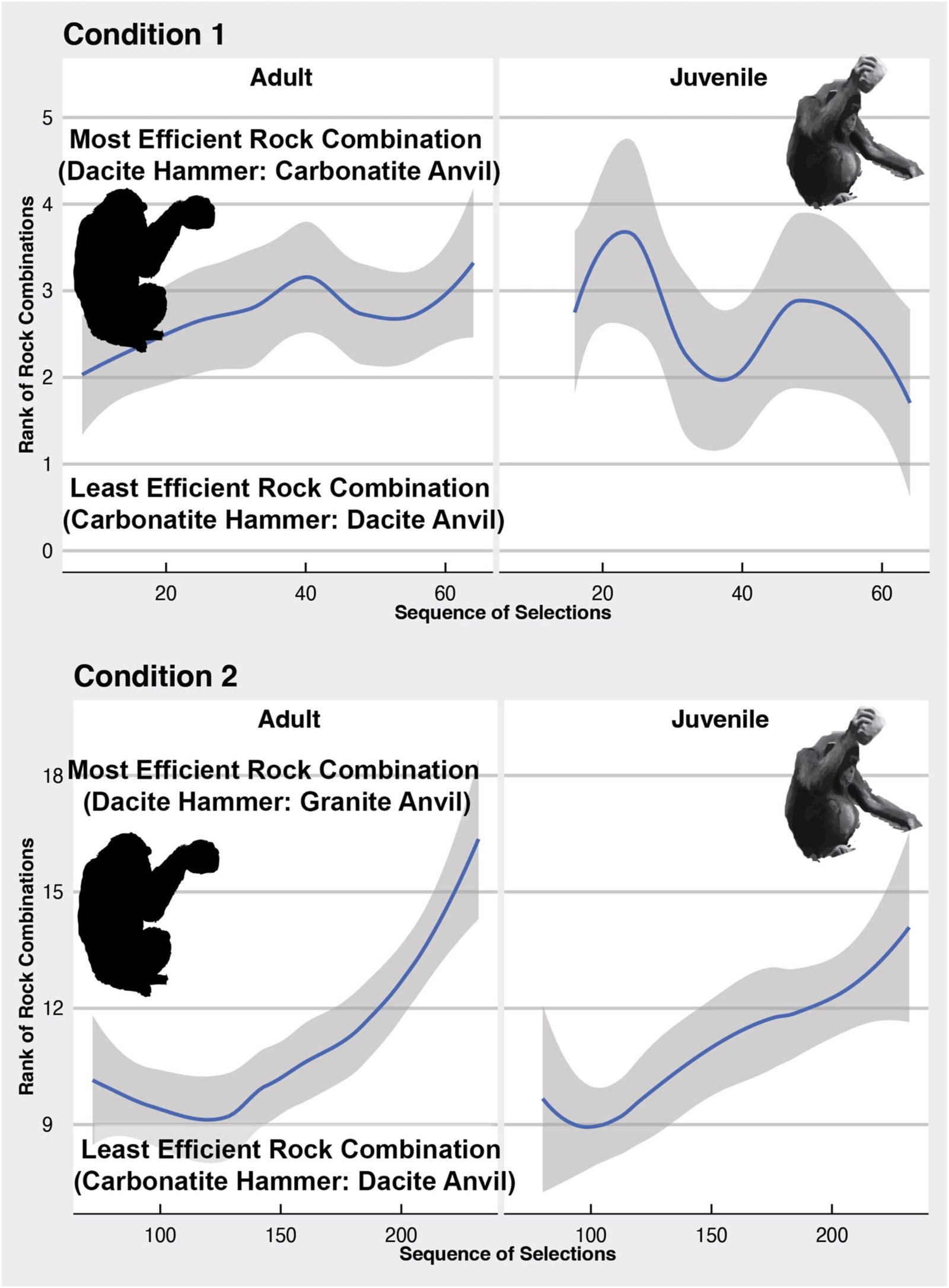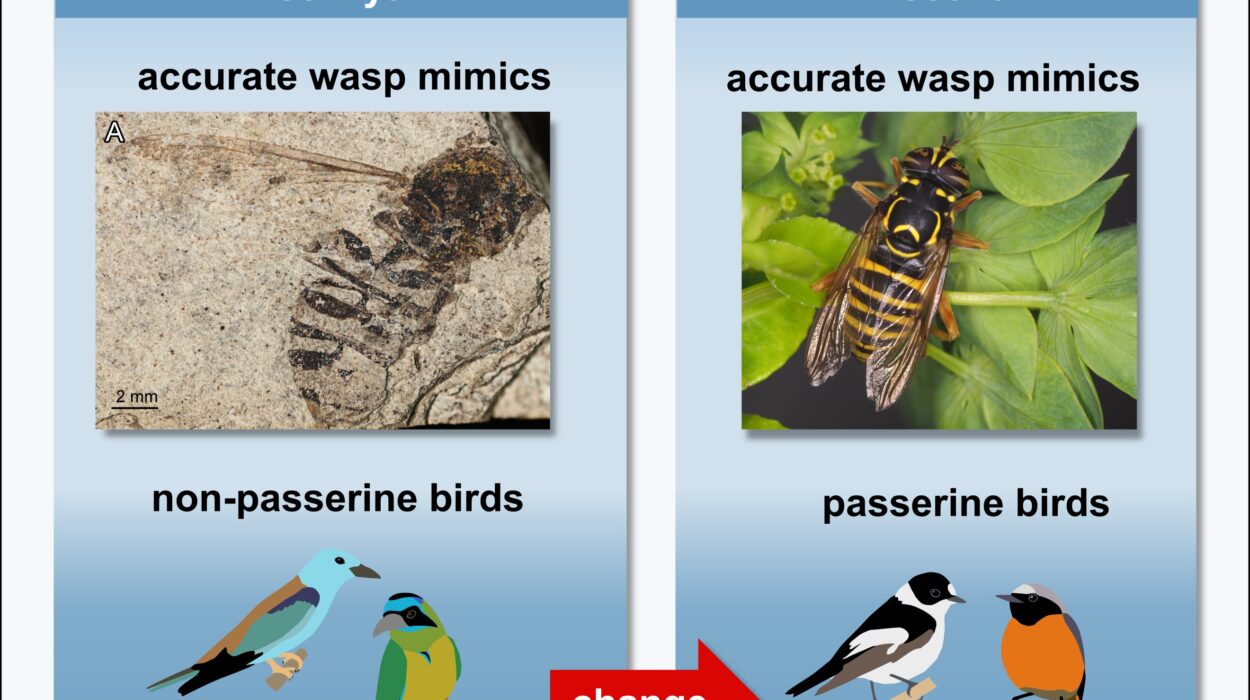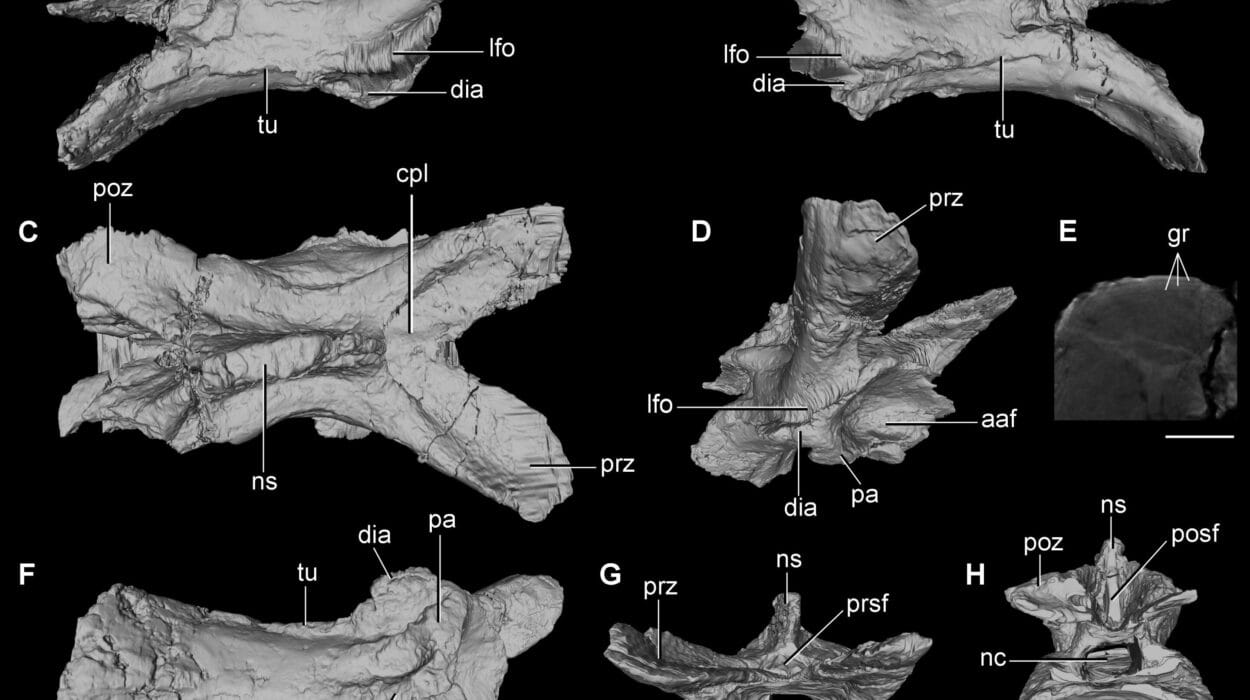An international team of paleobiologists, anthropologists, and behavioral scientists has recently made an intriguing discovery that bridges the gap between ancient human behavior and modern chimpanzee tool-use practices. Published in The Journal of Human Evolution, the team’s research highlights how the methods used by chimpanzees to select stones for nut-cracking might resemble the process once employed by early human ancestors when choosing and using tools. The results have significant implications for understanding the origins of technology and cognition in hominins.
In the study, the researchers focused on how chimpanzees, one of our closest living relatives, select tools—specifically rocks—to crack open hard nuts. This behavior was carefully observed and compared with known evidence of early human tool use, providing a compelling look into the cognitive and social behaviors that may have influenced tool selection millions of years ago.
Humans have a long history of making and using tools, with the oldest known stone tools dating back around 2.5 million years. These tools were discovered at sites associated with the Oldowan stone industry, a key archaeological period known for producing simple but effective implements like choppers and scrapers. These tools were used by early human ancestors, often referred to as hominins, for a variety of functions including cutting, processing meat, and breaking open plant material.
Previous research on Oldowan tools has emphasized that early hominins did not simply pick up any rock but instead made intentional choices based on the physical properties of the stone. They selected tools that could withstand the rigors of their tasks, and there is evidence suggesting that such practices were passed down through generations, implying that knowledge about which stones made the best tools may have been learned and shared within communities.
This knowledge of how ancient humans used tools prompted the researchers in the recent study to ask whether modern chimpanzees—a species known to use tools for various tasks—might also show similar patterns of careful selection and deliberate usage when it comes to cracking nuts with stones. Specifically, they wondered whether chimpanzees choose their tools based on functionality, just as human ancestors likely did.
The experimental approach taken by the research team was meticulous. They began by providing a group of chimpanzees with an assortment of premeasured rocks. Each rock differed in properties such as elasticity, hardness, and rebound characteristics, and the researchers paid close attention to the weight, size, and shape of each stone. The goal was to observe whether the chimps made any distinctions in their stone selection based on the mechanical properties of the rocks, and to assess how these choices related to the efficacy of cracking open a tough nut.
A chimpanzee’s technique for cracking open a nut involves selecting two stones: one serves as the hammer and the other as the anvil. The hammer stone is held in the hand and swung down with force onto the nut placed atop the anvil stone. In choosing a hammer, chimps are drawn to harder stones, those that are capable of providing a heavy enough blow to crack the nut. In contrast, the anvil is selected for its durability; it must be resilient enough to absorb the force of the blows without shattering, and it must be stable enough to prevent the nut from bouncing off rather than cracking open.
The researchers’ findings were fascinating. They observed that the chimpanzees’ selections were largely influenced by the mechanical properties of the stones rather than their appearance. Harder stones were consistently chosen as hammers, while softer stones were preferred as anvils. The chimps demonstrated a functional understanding of which stone would best serve each specific purpose in the nut-cracking process.
Moreover, the researchers noted that the selection process was not entirely instinctual but rather exhibited signs of social learning. Younger chimpanzees were observed choosing stones similar to those used by older, more experienced individuals. This behavior suggests that the knowledge of which stones work best for specific tasks could be passed down through social learning, a phenomenon in which young chimps learn from observing the actions of others within their group. This implies that tool-selection knowledge could be culturally transmitted within chimpanzee communities in much the same way that early human ancestors may have passed down such knowledge over generations.
These findings challenge our understanding of the cognitive abilities of non-human primates and offer exciting new perspectives on the evolution of tool use. The similarities between chimpanzees’ and ancient hominins’ stone-selection behaviors are striking, and the research team argues that these results could point to a shared ancestral method of tool use dating back to early hominin ancestors. Just as modern chimps select stones with specific mechanical properties for a clear functional purpose, it’s possible that early hominins did the same, using careful and deliberate criteria in selecting tools to make their survival tasks more efficient.
The implications of this study stretch beyond the specific behavior of chimpanzees and into the broader history of human evolution. Understanding the cognitive processes that guided the selection and use of early stone tools is crucial for tracing the development of hominin intelligence, culture, and technology. Early hominins, like modern chimps, likely had a significant degree of intelligence that allowed them to select appropriate materials for tasks, and over time, these practices could have evolved into more sophisticated tool-making techniques, such as those seen in later periods like the Acheulean or Mousterian industries, which saw the advent of bifacial handaxes and other finely crafted implements.
Moreover, the study opens up intriguing new avenues for research into social learning and the transmission of knowledge in non-human primates. While the tool-making abilities of early hominins are often considered an important benchmark for measuring the rise of culture and intelligence, studies of species like chimpanzees suggest that much of the foundation for human tool use may have been laid long before the dawn of our species. This underscores the deep evolutionary roots of human behavior and the significant role that social learning may have played in shaping the development of early technologies.
Overall, this study serves as a reminder of the remarkable similarities between humans and our closest living relatives. The simple act of selecting the right rock for cracking open a nut may, in fact, be a reflection of deep evolutionary processes that have shaped both chimpanzees and human beings. By observing chimpanzee behavior today, researchers gain valuable insights into the ancient behaviors of human ancestors and the foundations of human culture and cognition.
In conclusion, the research team’s findings suggest that modern chimpanzees and ancient hominins may have shared certain tool-selection strategies, highlighting a continuum in the evolution of tool use that stretches back millions of years. Through careful observation of behavior, modern primates offer a unique window into understanding the distant past and may help explain some of the key innovations that contributed to the rise of our species. As researchers continue to study tool use and its evolutionary significance, the connection between chimpanzee behavior and the origins of human technology becomes ever more evident.
Reference: D.R. Braun et al, Stone selection by wild chimpanzees shares patterns with Oldowan hominins, Journal of Human Evolution (2024). DOI: 10.1016/j.jhevol.2024.103625






